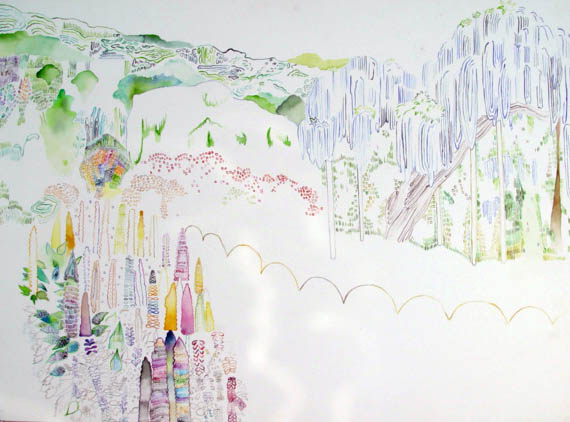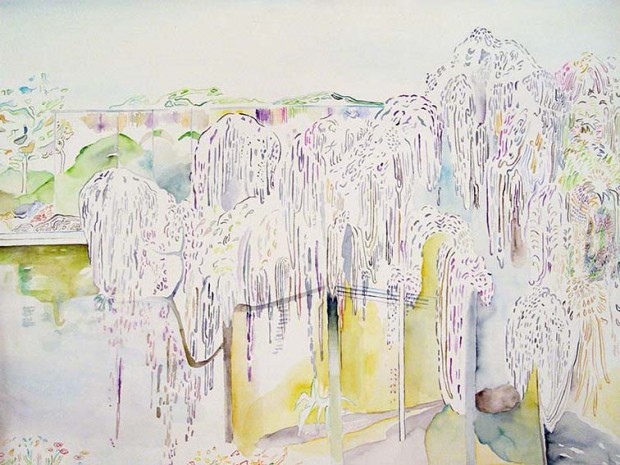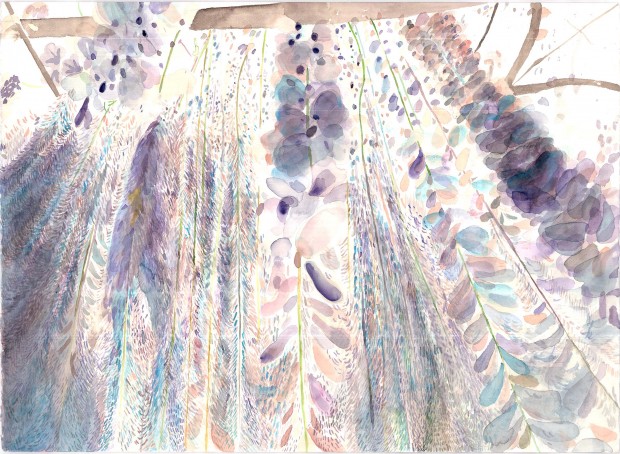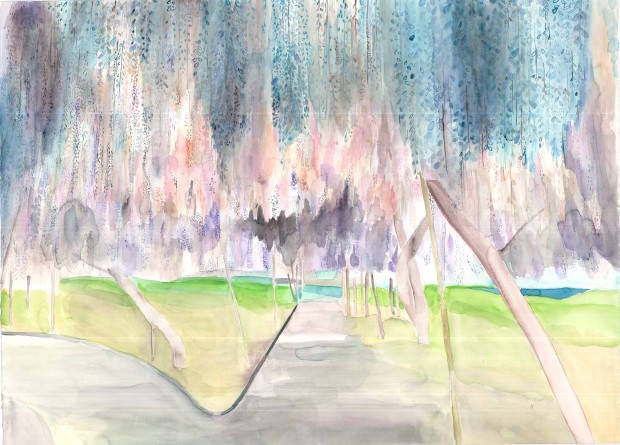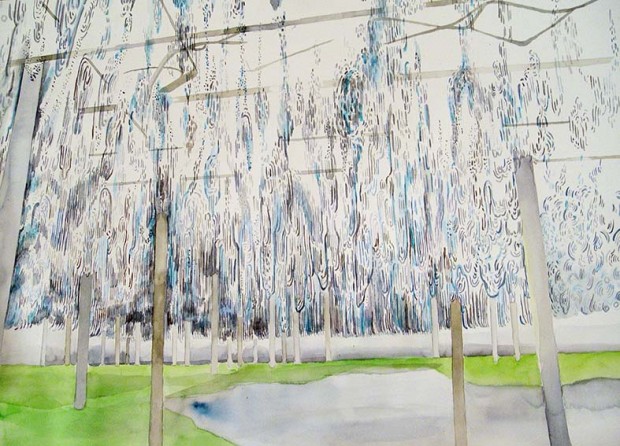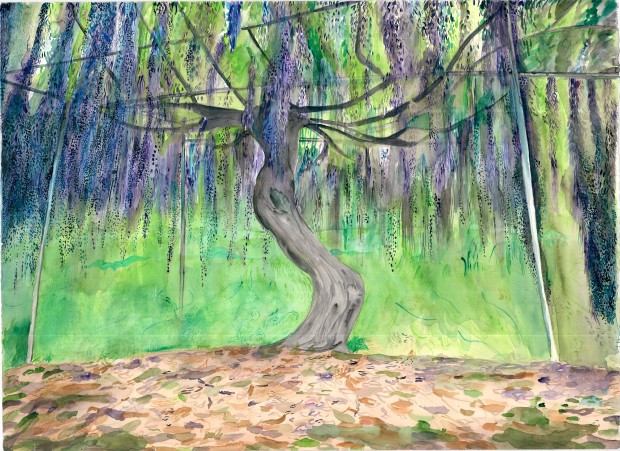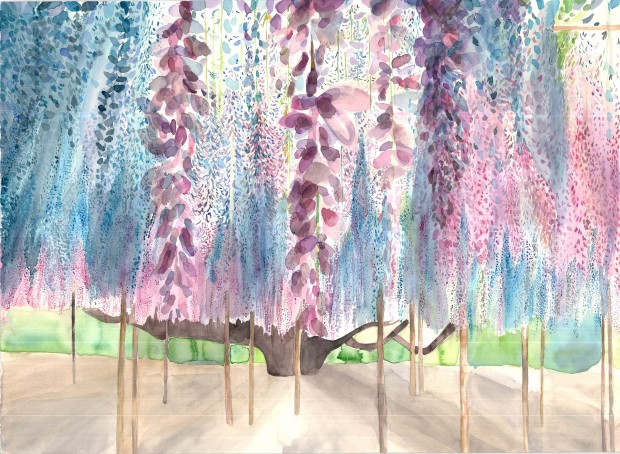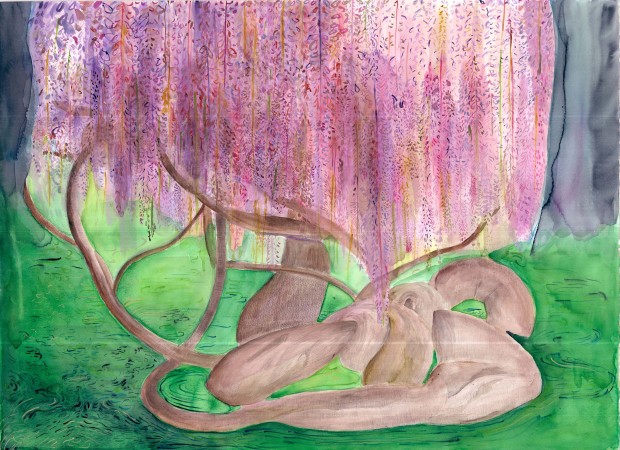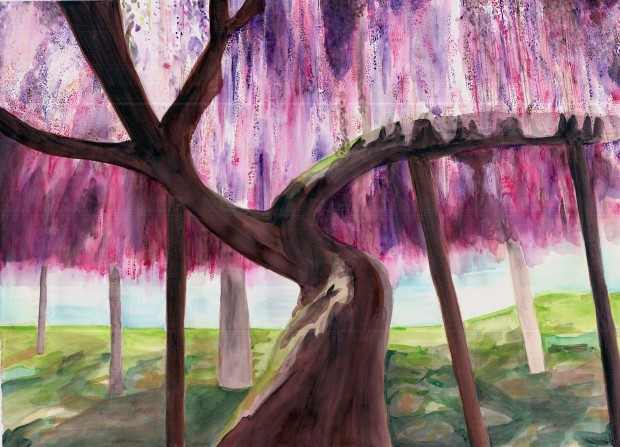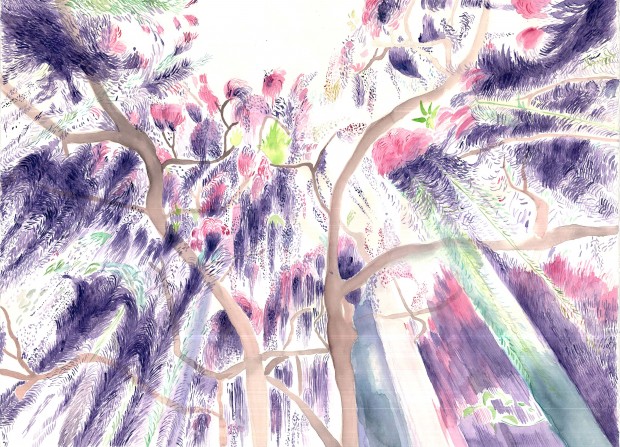Initial inspiration for the cycle Artificial Nature came out from the spectacular views of the wisteria flowers at Kawachi Fuji Gardens, in Kitakyushu, Japan. Representing an example of Japanese perception of beauty and architecture, in these gardens many visitors witnessed the experience of an overwhelming zen-like peace and calmness.
However, the cycle Artificial Nature sublimes many strata of profound garden’s symbolism. As Jung noted, garden is a place where Nature is subdued, ordered, selected and enclosed; it is a symbol of the consciousness as opposed to the forest, which is a symbol of the unconsciousness. A place of growth, a place where the inner life is cultivated, the garden is also the symbol of the soul and the qualities cultivated in it and of tamed and ordered nature. Considered also as an image of the innocence, enclosed gardens are the feminine, protective principle. Representing both virginity and fertility, gardens symbolize the happiness, salvation, and purity, and are used to create peace between people.
Rich symbolism of gardens in Western philosophy and culture corresponds with Eastern tradition, where the art of gardening strives for a harmony of all its elements, suggesting the harmony between the realms of movement and stasis. Always understood as prefect reproductions of cosmic harmony, the gardens in China and Japan are designed to have a beneficial influence on humanity.
The garden is the symbolic place where Nature and human Ingenuity (instinct, desire and industria) join together: it is a place of beauty, of natural luxury, but also of order, symmetry and artful rules.
However, as idyllic gardens within medieval cloisters represented the paradise that had been lost, in the history of civilization, and particularly today, the humankind is witnessing the paradoxal processes: on one hand, there are horrifying images of environmental disaster, and on the other – miraculous products of artificial “nature”. Therefore, contemporary gardens themselves, as well as all efforts to produce them, are giving us again the portrait of the utopian paradise, sharply faced with dystopian image of the reality.

